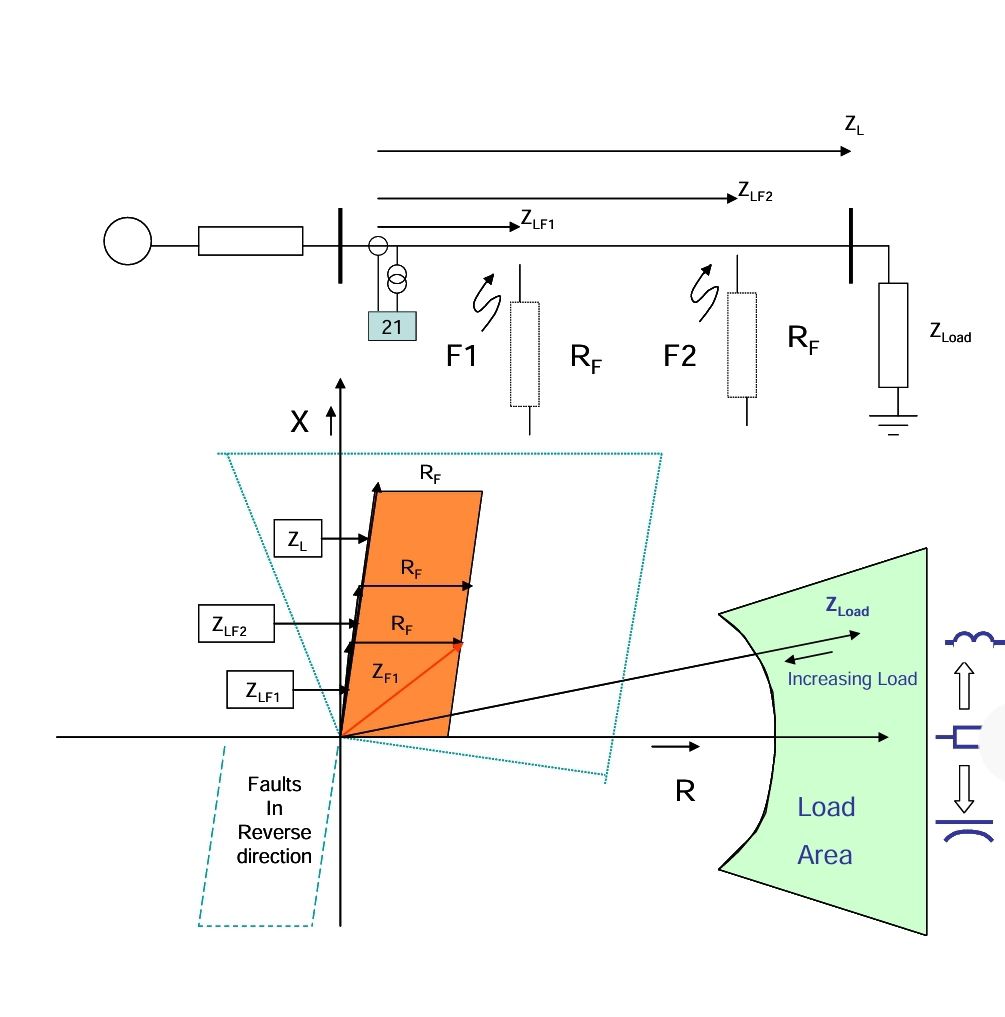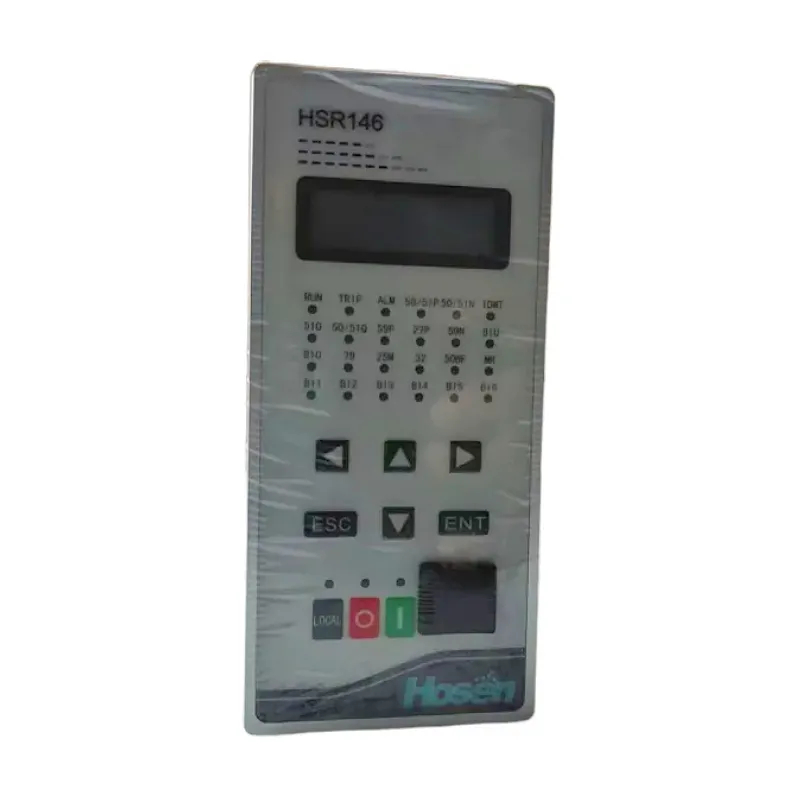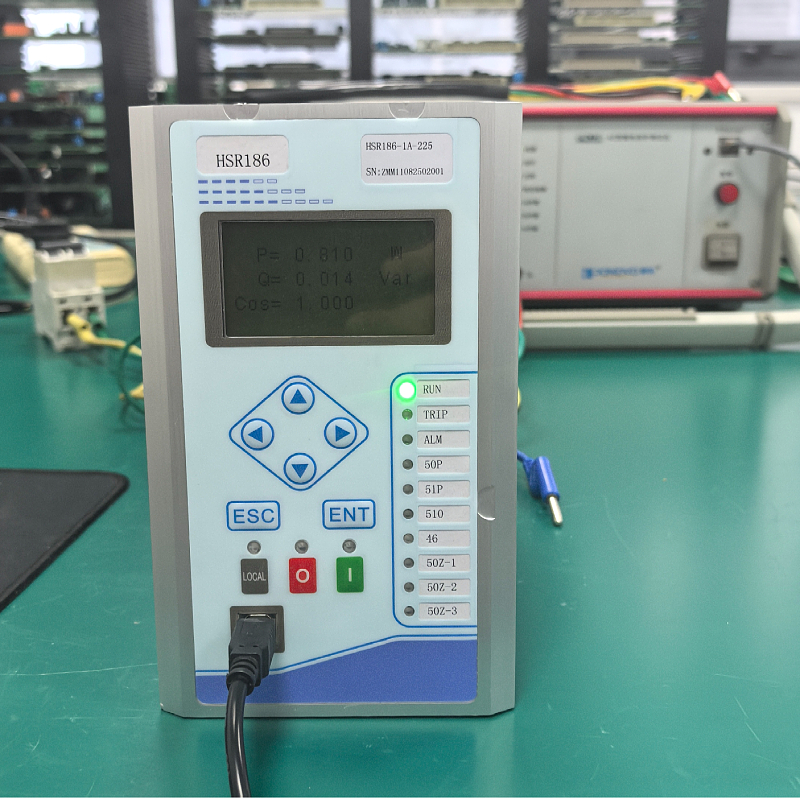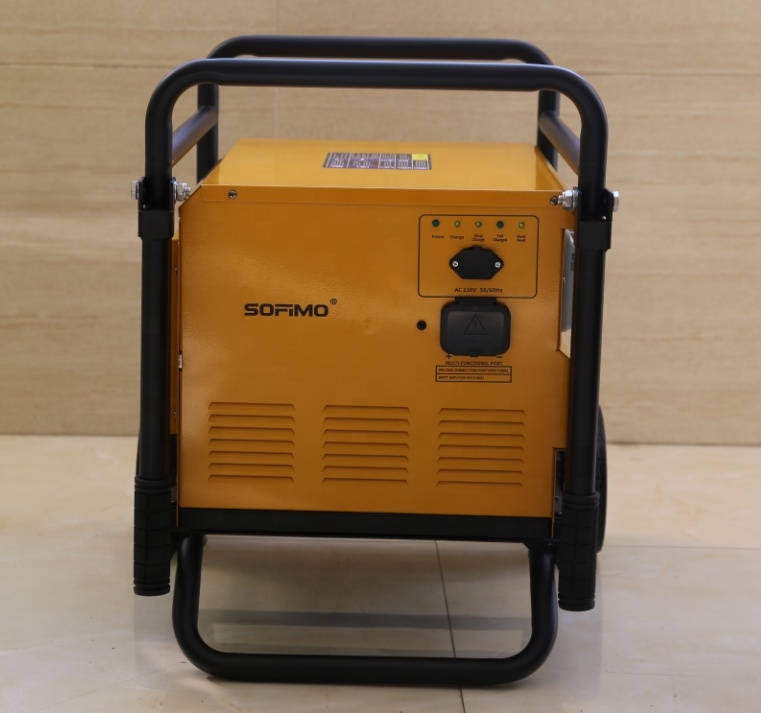Discriminating zones of protection can be achieved using distance relays, provided that fault distance is a simple function of impedance. While this is true in principle for transmission circuits, the impedances actually measured by a distance relay also depend on the following factors:
1. the magnitudes of current and voltage (the relay may not see all the current that produces the fault voltage)
2. the fault impedance loop being measured
3. the type of fault
4. the fault resistance
5. the symmetry of line impedance
6. the circuit configuration (single, double or multiterminal circuit) It is impossible to eliminate all of the above factors for all possible operating conditions. However, considerable success can be achieved with a suitable distance relay.
This may comprise relay elements or algorithms for starting, distance measuring and for scheme logic. Various distance relay formats exist, depending on the operating speed required and cost considerations related to the relaying hardware, software or numerical relay processing capacity required. The most common formats are:
a. a single measuring element for each phase is provided, that covers all phase faults
b. a more economical arrangement is for ‘starter’ elements to detect which phase or phases have suffered a fault. The starter elements switch a single measuring element or algorithm to measure the most appropriate fault impedance loop. This is commonly referred to as a switched distance relay
c. a single set of impedance measuring elements for each impedance loop may have their reach settings progressively increased from one zone reach setting to another. The increase occurs after zone time delays that are initiated by operation of starter elements. This type of relay is commonly referred to as a reach-stepped distance relay
d. each zone may be provided with independent sets of impedance measuring elements for each impedance loop. This is known as a full distance scheme, capable of offering the highest performance in terms of speed and application flexibility Furthermore, protection against earth faults may require different characteristics and/or settings to those required for phase faults, resulting in additional units being required. A total of 18 impedance-measuring elements or algorithms would be required in a full distance relay for three-zone protection for all types of fault. With electromechanical technology, each of the measuring elements would have been a separate relay housed in its own case, so that the distance relay comprised a panelmounted assembly of the required relays with suitable inter-unit wiring. Digital/numerical distance relays are likely to have all of the above functions implemented in software. Starter units may not be necessary. The complete distance relay is housed in a single unit, making for significant economies in space, wiring and increased dependability, through the increased availability that stems from the provision of continuous self-supervision.

















